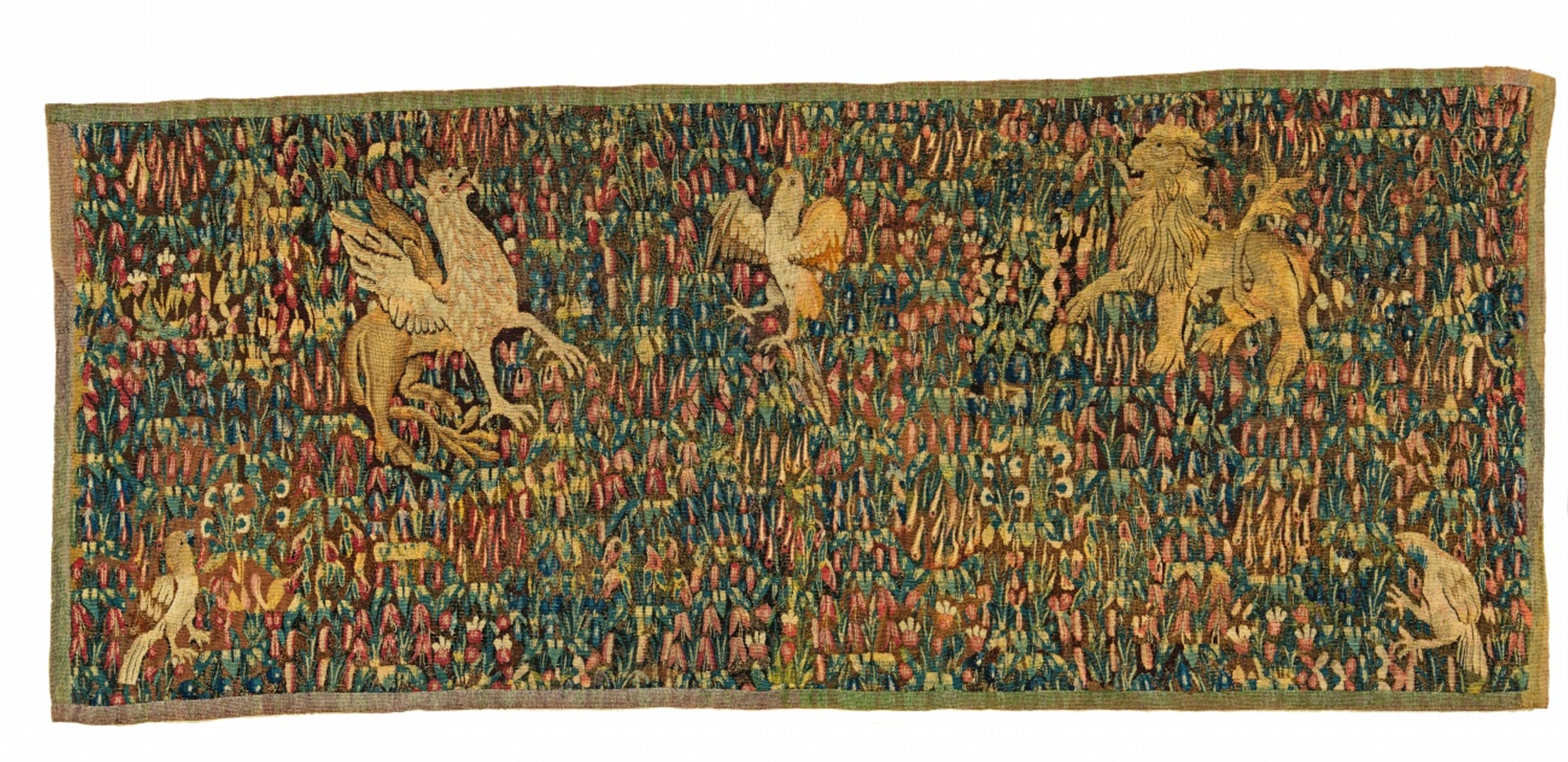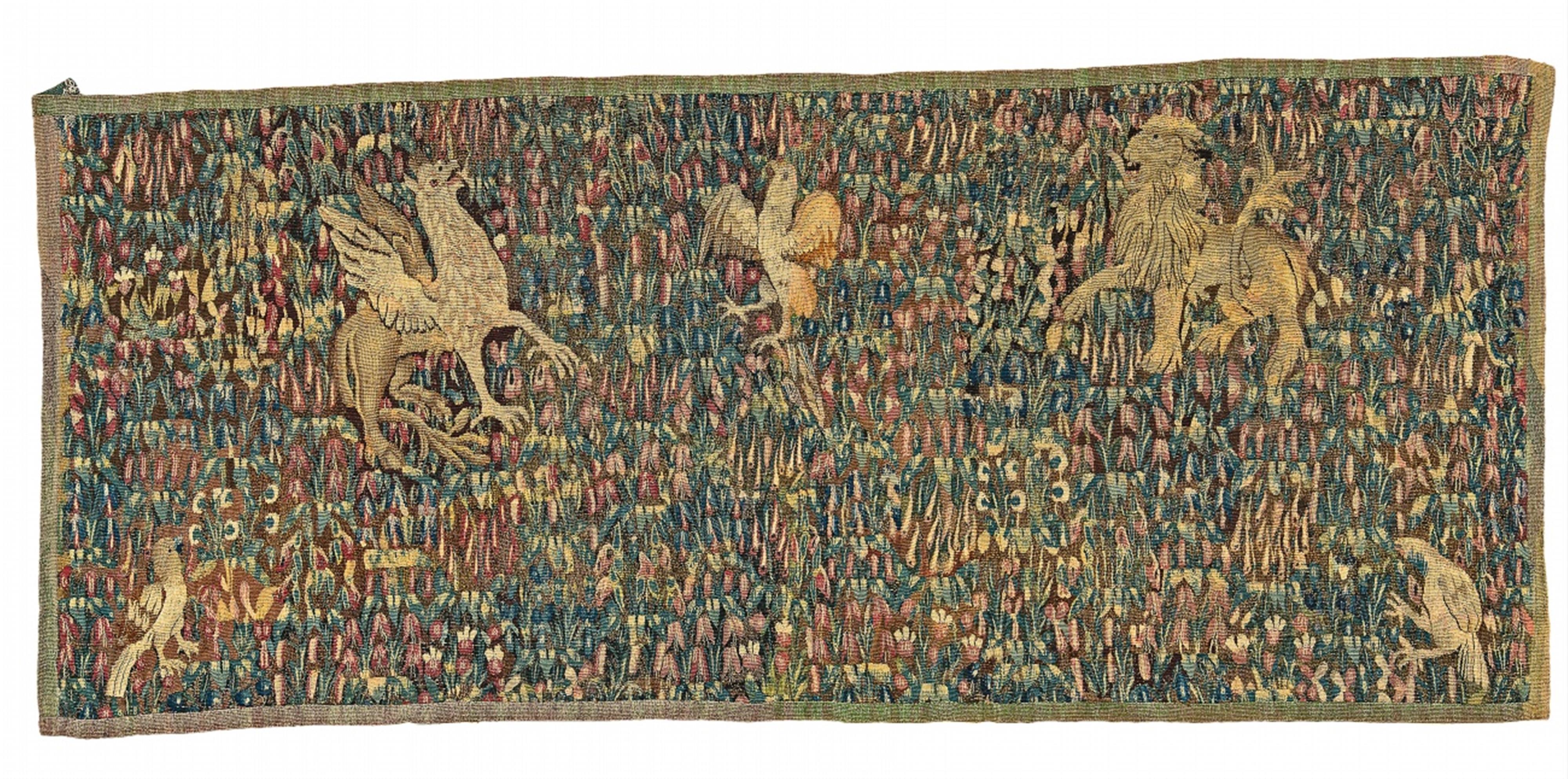An early Millefleurs tapestry with animals
Polychrome wool weft, cotton warp. With a griffon, lion, and three birds amid a carpet of coloured stylised wildflowers, presumably originally on brown ground. Numerous, partially older, repairs, associated applied border. H 89, W 204 cm.
Northern France / Flanders, 2nd quarter 16th.
Millesfleurs (thousand flower) tapestries originated in the late Gothic period, in the second half of the 15th century, and became fashionable at the courts of Northern France and Flanders. Developed from the iconography of the paradise garden, the flower meadow motif soon separated from its original sacred context. The verdure tapestries made for Philippe le Bon, Duke of Burgundy, in 1466 are thought to have provided the initial impetus for these new secular designs. An eight-piece ensemble from this series has survived and is kept in the Historisches Museum Bern. The impressive work depicts 30 identifiable species of flowers, as well as including the Duke's coat-of-arms and the flints of the Order of the Golden Fleece throughout the design.
The most famous millefleurs tapestries are probably the enigmatic Unicorn Tapestries kept in the Musée de Cluny in Paris, dated to the late 15th century. These pieces derive much of their aesthetic appeal from their unusual red ground and subtle depiction of women's life at court.
Literature
Further comparable tapestries in the Musée Cluny, Musée national de Moyen Âge Paris and in Château de Langeais / Loire.
A similar fragment in the Rijksmuseum Amsterdam inv. BK-1755 (Hartkamp-Jonxis/Smit, European Tapestries in the Rijksmuseum, Zwolle-Amsterdam 2004, no. 20).




